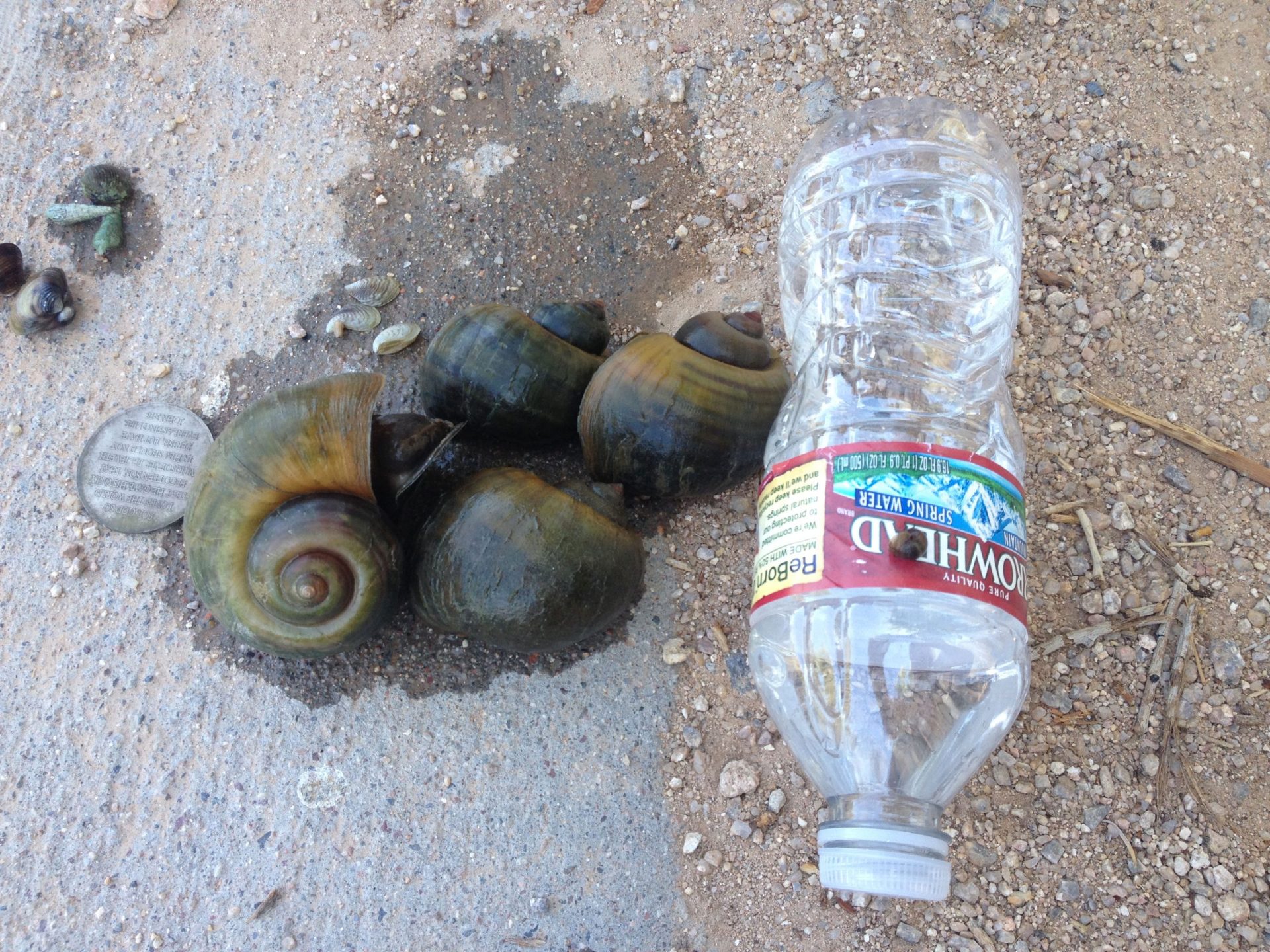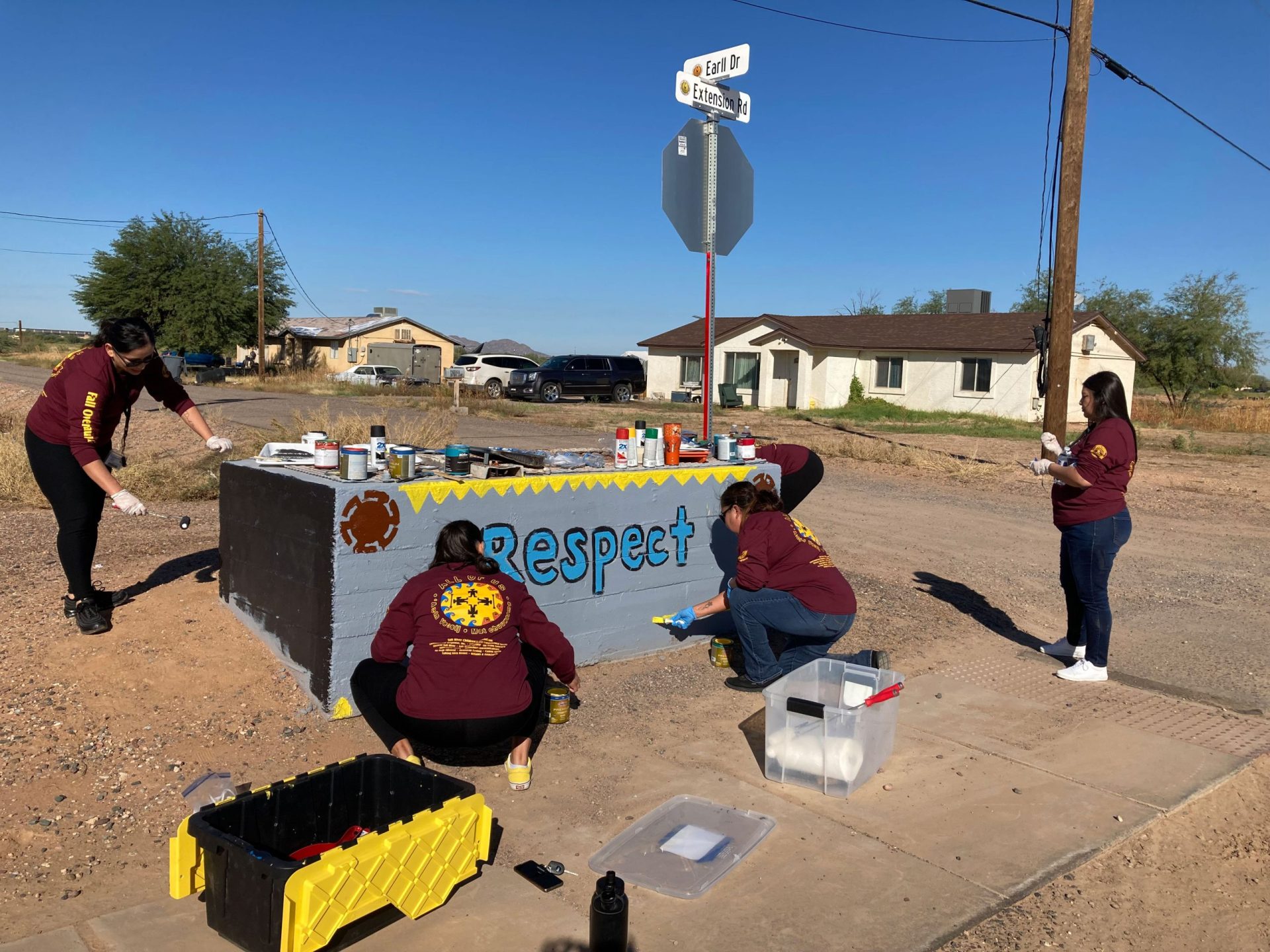VIEWS: 2951
December 1, 2022Invasive Apple Snails a Threat to Community’s Riparian Area
Apple snails are freshwater snails originally native to rivers in South America but which have established populations in various regions around the world. The snails have been a threat to the Salt River Pima-Maricopa Indian Community’s waterways and riparian area since they were first discovered in the lower Salt River, near the Verde River confluence, in 2011.
The Arizona Game & Fish Department said that the snails, which are listed as an aquatic invasive species, present a major risk to native wetland ecosystems by altering native freshwater habitats significantly through competition for food and space.
The snails reproduce rapidly; just one female can produce up to 15,000 offspring per year.
This summer, SRPMIC’s Community Development Department–Environmental Protection and Natural Resources (CDD-EPNR) removed 3,110 egg masses and 509 adult apple snails from Community waterways.
Victoria Olmstead, CDD-EPNR wildlife biologist and noxious weed/invasive species expert, said that the current goal is to control the snails’ population growth and educate the Community about their presence.
“Within the Community, CDD-EPNR has been holding outreach events where we’ve been working to educate Community members on the presence of apple snails and what to do if they see the bubblegum-like globs of eggs when they’re at the river,” said Olmstead.
There is no way to know exactly how many of the snails are in the Community, but CDD-EPNR has done “float counts,” where clickers are used to keep a count of egg masses and adults observed.
During these float counts, when feasible, the egg masses were submerged or otherwise destroyed to decrease the likelihood that the eggs would hatch. Adult snails were removed.
The snails are an intermediate host for the rat lungworm (Angiostrongylus cantonensis), a nematode (worm) that can cause meningitis in humans.
“We recommend if you see the egg masses when you’re out at the river, push them into the water or mush them,” said Olmstead. “Do not touch the egg masses with your bare skin. If you happen to get egg mass on your bare skin, wash thoroughly with soap and water or use antibacterial hand sanitizer.”
Olmstead said that the riparian area is also suffering damage from pollution, climate change and erosion, as well as other invasive species such as salt cedar.







